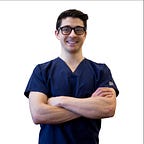How Bacteria went from “Eww” to “Ahh”
With every public door handle, subway rail, or introduction of a stranger, our subconscious goes straight to germs. Last year, the largest producer of hand sanitizer brought in $83 million in revenue; what we grew up thinking was going to make us sick has now turned into the latest fad — bacteria. From food poisoning, to probiotics and kombucha, to contemporary art pieces at the Solomon R. Guggenheim Museum; bacteria may actually be beneficial or better yet, even art.
The “Eww”
I distinctly remember being told when I was young I had to wash my hands before I ate or I couldn’t eat food that had fallen on the floor. In the grade school cafeteria, we would dare each other to the table or eat food that had fallen on the floor. Everyone would scream and cringe, but oddly enough, through the 100+ experimental trails we conducted, no one ever got sick.
In the 1880s-1890s the germ theory of disease began to reach the modern medicine. The knowledge that bacteria and viruses were the cause of most diseases shifted the paradigm. Through the next century there was a growing suspicion that bacteria was our enemy and that it was lurking in every corner. Hospitals grew weary of sterility and out-breaks; and young parents used hand sanitizer and bleach like it was sunscreen.
The Facts
The growing number of scientific research articles on what is known as the “microbiome”, or the bacteria on the human body, has increased at an exponential rate. We now know that there are more bacterial cells on our body and in our gastrointestinal (GI) tract than we have human cells in our body. The idea that we may be more bacterial in composition than human. No matter how much soap you use, or how much you scrub, you will never truly be alone.
Recent studies have shown that the majority of bacteria on our skin and the bacteria in our GI tract are actually beneficial. Specific bacterial strains play a fundamental role in metabolism and modulation of the human immune system. The effect on the GI tract has been so pronounced, strains are now sold commercially to aid in digestion, motility, and abdominal discomfort.
The “Ahh”
This realization that individual probiotic strains can affect the complex community of bacteria in our stomach and intestines led to the budding of a whole new industry. From supplements, to yogurt, to kombucha, to kimchi; suddenly every millennial, whether they suffered from IBS or not, took to ingesting these probiotic cultured dishes with the notion that it was somehow healthy. While not every probiotic based product on the market is healthy, due to other ingredients; there is clear evidence that there are beneficial effects of several specific probiotic bacterial strains.
The Art
Through this gradual shift in culture to hip trends, we have not fully detached from our phobias; we still somehow have anxiety and fear from these small microorganisms. World renowned Artist, Anicka Yi has been pioneering a new type of contemporary art: Bioart. In an attempt to force us to confront our fear and anxiety, Yi take’s seemingly innocuous biological species, like bacteria, ants, mold, and fungus and blows them up purposely tevoking a sense of “shock and eww”.
In her most recent piece, Force Majeure, at her exhibit, Life is Cheap at the Solomon R. Guggenheim Museum in New York City; Yi takes sampled bacteria from across Manhattan and grows it in a 960-squarefoot diorama bringing the colors and composition of the bacterial palate to life.
As the head biologist and bacteria specialist on the project, it has been fascinating to watch the reactions of the public on such a bold new approach to artistic creativity. When science meets nutrition and art, you get exposure to every small niche in-between. As a Medical Student and PhD candidate currently working on the gut microbe’s influence on human nutrition and metabolic biology — I hope the public takes a bigger interest in Bioart moving forward. As novel as this field may be, who knows which scientists and artists will emerge to truly explore the capabilities of biological species as a medium for artistic creativity.
We hope you have the chance to visit our exhibit — It is currently on Display at the Solomon R. Guggenheim Museum until July 5th, 2017 on the Fifth Floor.
Video Interview of the Exhibit: BIOART
